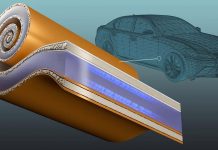
Lithium-ion batteries are everywhere—they power our smartphones, electric cars, and even help store energy at power stations.
Despite their widespread use, these batteries have some drawbacks, primarily due to their expensive and environmentally harmful components.
Recent research offers a promising solution—a new type of battery electrolyte that might be both cheaper and more sustainable.
This development, published in the prestigious journal Angewandte Chemie International Edition, focuses on a component called LiDFOB which could replace the commonly used and costly LiPF6.
Let’s break down what this means. A battery consists of a positive part (cathode), a negative part (anode), and a liquid called an electrolyte that helps carry charged particles between these two ends during charging and discharging.
This interaction is crucial for the battery to work effectively. Traditionally, the electrolyte is made with a high concentration of lithium salts, which can be pricey and not so great for the environment.
The new research by Jinliang Yuan, Lan Xia, and Xianyong Wu from Ningbo University in China and the University of Puerto Rico introduces an ultralow-concentration electrolyte. In simple terms, it means the new electrolyte uses a lot less lithium salt—just 0.16 mol/L, making it significantly cheaper to produce.
This isn’t just about cost.
The new electrolyte also performs well. It enables the battery to operate efficiently thanks to its good ionic conductivity, a fancy term for the electrolyte’s ability to let electric charge flow through it. This is crucial for the battery’s effectiveness and longevity.
Furthermore, while the currently used LiPF6 can break down in moisture, releasing harmful gases, LiDFOB is stable in both water and air. This means batteries using LiDFOB can be made in normal conditions without the need for special dry rooms, reducing production costs further and making manufacturing simpler and safer.
The environmental benefits extend to recycling too. Batteries using this new electrolyte would be easier and less harmful to recycle, boosting the sustainability of battery technology.
In summary, this breakthrough not only promises to reduce the cost of batteries but also their impact on the environment, all while maintaining performance. It’s a win-win for both manufacturers and the environment, potentially paving the way for more sustainable energy storage solutions.



